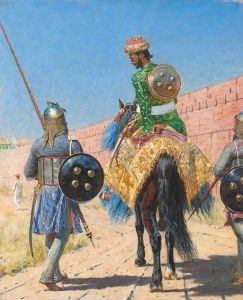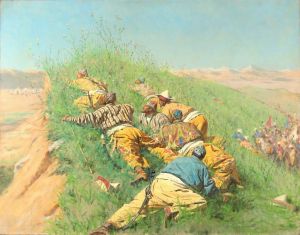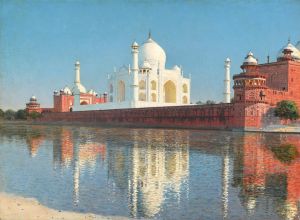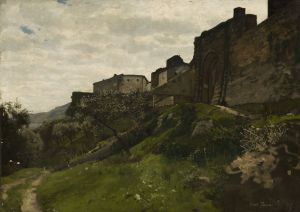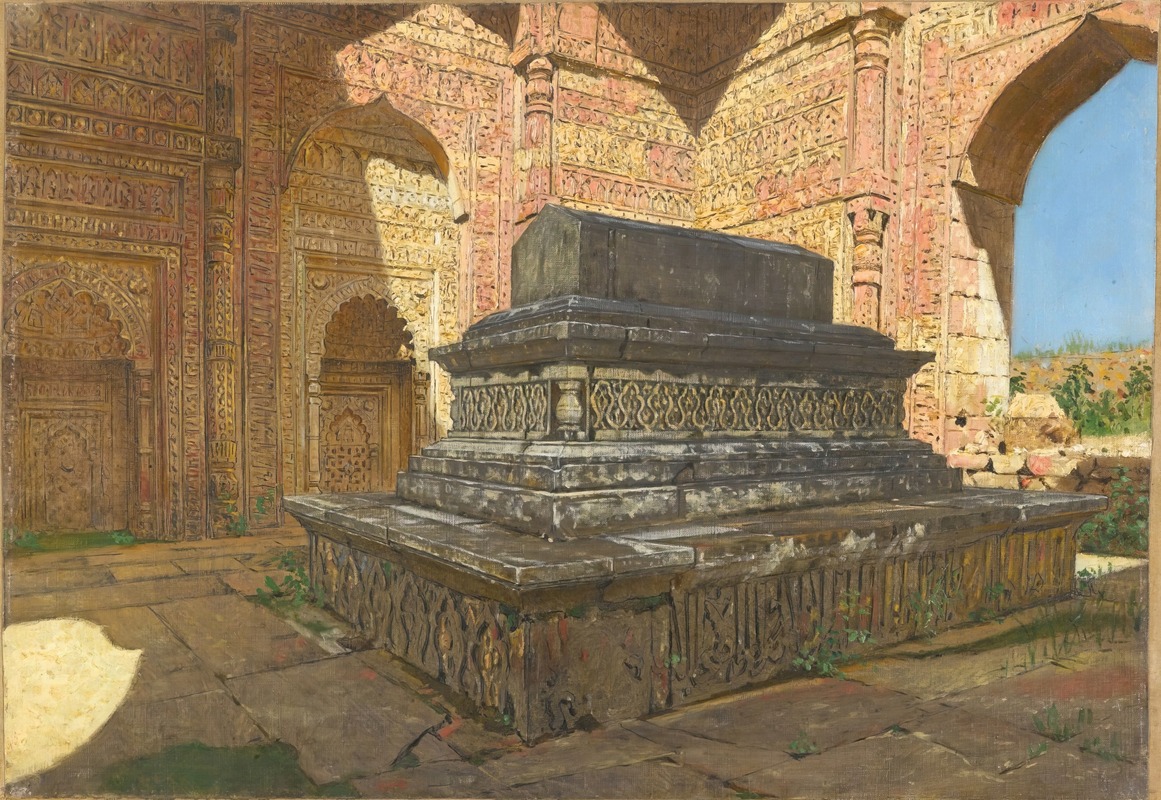
Tomb of Sultan Iltutmysh in old Delhi
A hand-painted replica of Vasily Vereshchagin’s masterpiece Tomb of Sultan Iltutmysh in old Delhi, meticulously crafted by professional artists to capture the true essence of the original. Each piece is created with museum-quality canvas and rare mineral pigments, carefully painted by experienced artists with delicate brushstrokes and rich, layered colors to perfectly recreate the texture of the original artwork. Unlike machine-printed reproductions, this hand-painted version brings the painting to life, infused with the artist’s emotions and skill in every stroke. Whether for personal collection or home decoration, it instantly elevates the artistic atmosphere of any space.
Vasily Vereshchagin, a renowned Russian war artist and traveler, is known for his vivid and detailed paintings that often depict scenes from his extensive travels across Asia and the Middle East. One of his works, "Tomb of Sultan Iltutmish in Old Delhi," captures the architectural and historical essence of the Sultan Iltutmish's tomb, located in the Qutb complex in Delhi, India.
Sultan Iltutmish was a prominent ruler of the Delhi Sultanate, reigning from 1211 to 1236. He was the third ruler of the Mamluk dynasty, also known as the Slave dynasty, and is credited with consolidating the Sultanate's power in northern India. The tomb of Sultan Iltutmish, constructed in 1235, is one of the earliest examples of Islamic architecture in India. It is situated within the Qutb complex, which is a UNESCO World Heritage Site and includes other significant structures such as the Qutb Minar and the Quwwat-ul-Islam Mosque.
The tomb itself is a square structure made of red sandstone, featuring intricate carvings and inscriptions in Arabic script. The interior of the tomb is notable for its elaborate mihrab (a niche indicating the direction of Mecca), which is adorned with detailed geometric and floral patterns. The architectural style of the tomb reflects a blend of Islamic and indigenous Indian elements, characteristic of the early Indo-Islamic architecture that developed during this period.
Vereshchagin's painting of the tomb likely captures the serene and historical atmosphere of the site, emphasizing the artistic and cultural significance of the structure. His works are known for their attention to detail and historical accuracy, often providing a glimpse into the architectural and cultural landscapes of the regions he visited. Although specific details about this particular painting by Vereshchagin are limited, his broader body of work often highlights the interplay between architecture and history, offering viewers a window into the past.
Vereshchagin's travels to India were part of his extensive journeys through Asia, where he sought to document and portray the diverse cultures and historical sites he encountered. His paintings from this period often reflect his fascination with the rich history and architectural heritage of the Indian subcontinent. Through his art, Vereshchagin aimed to bridge cultural gaps and provide a deeper understanding of the regions he explored.
The Tomb of Sultan Iltutmish remains an important historical and architectural landmark in Delhi, attracting visitors and scholars interested in the early Islamic architecture of India. Vereshchagin's depiction of the tomb contributes to the appreciation and understanding of this significant monument, highlighting its role in the cultural and historical narrative of the Delhi Sultanate.
In summary, while specific information about Vereshchagin's painting "Tomb of Sultan Iltutmish in Old Delhi" is limited, the historical and architectural significance of the tomb itself is well-documented. Vereshchagin's work likely captures the essence of this important site, reflecting his broader artistic mission to document and celebrate the diverse cultural heritage of the regions he visited.





